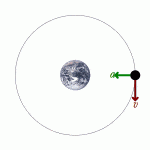Types Of Rocks
What are the different types of rocks? We see rocks everywhere. But do you know that there are three main types of rocks? These types differ in many ways, from the ways they are formed to their age and locations.
The first main types of rocks are igneous rocks. These are the types of rocks that are formed from cooling magma. There is a process that makes the magma lose its heat then the liquid magma becomes solid – and becomes the igneous types of rocks. The earth’s surface is mostly composed of igneous rocks. As long as there is coldness of space, igneous rocks are formed. The name of igneous types of rocks came from the word “ignis”, which means fire. They are also known as the volcanic rocks as they are the ones that are formed from magma. You see, magma don’t always reach the surface of the earth. They solidify into crystals before they even reach the surface. As long as the rocks are formed by the cooling of magma, they can be considered igneous. The most common igneous rock types include granite, obsidian, and basalt.
The second main types of rocks are called sedimentary. These types of rocks are the ones that are formed basically on the earth’s surface. They can be formed in the water or land, too. These types of rocks are often results of the accumulation of broken off small pieces of rocks that have already existed. This is why sedimentary rocks are also called secondary rocks. There are three main types of rocks under the sedimentary category. They are clastic, chemical, and organic. The clastic sedimentary rocks are the rocks that are composed of, well, clasts. They are broken up rocks that are joined by cementation and compaction. The chemical sedimentary rocks, however, are rocks that are formed by evaporation and flooding. When there is flood, the existing rocks get wet and when the water gets evaporated it leaves some layer of minerals. These are what bind the chemical sedimentary rocks together. Lastly, we have organic rocks. These are rocks that are formed from organic materials such as calcium and the like.
Lastly, we have the metamorphic rocks. These are sedimentary and igneous rocks that are subjected into intense pressure. This pressure can be of intense heat. Therefore, these existing sedimentary and igneous rocks change their composition and form and then become the metamorphic rocks. The thing about these metamorphic rocks is that they are usually formed from within the crust of the earth. The metamorphism process makes the rocks more compact. The name of these rocks, metamorphic, comes from the terms “meta” and “morph”. These means “change” and “form” respectively.
This is the basic formation process of the metamorphic rocks, hence the name. As long as an existing rock is moved in a different environment, an environment where minerals are present, the existing rocks can become unstable. These bring about change to the rock. They can break down and get bigger, depending on the conditions. This is how metamorphic rocks form.






